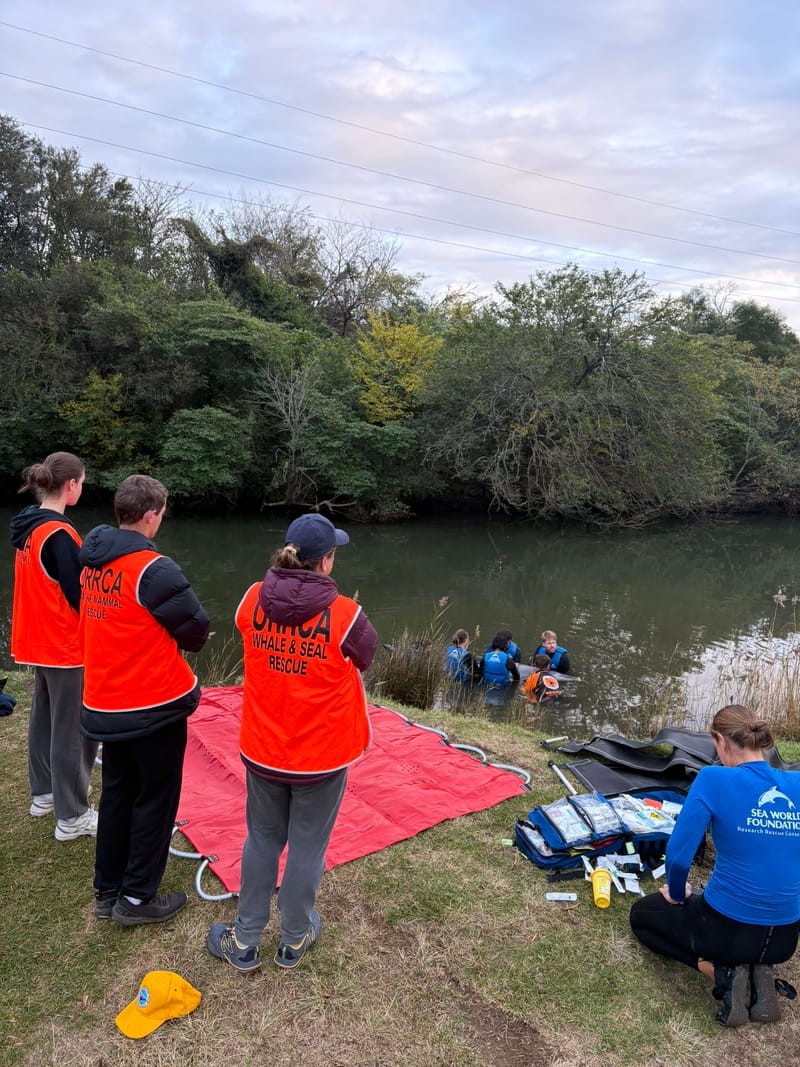Why fungi hunting is for everyone
Fungi are popping up everywhere right now. I’ve had a couple of rounded earthstars (Geastrum saccatum) burst up from under the clothesline. Side note: I often use common names, despite the confusion they can sometimes cause. I’m all about...
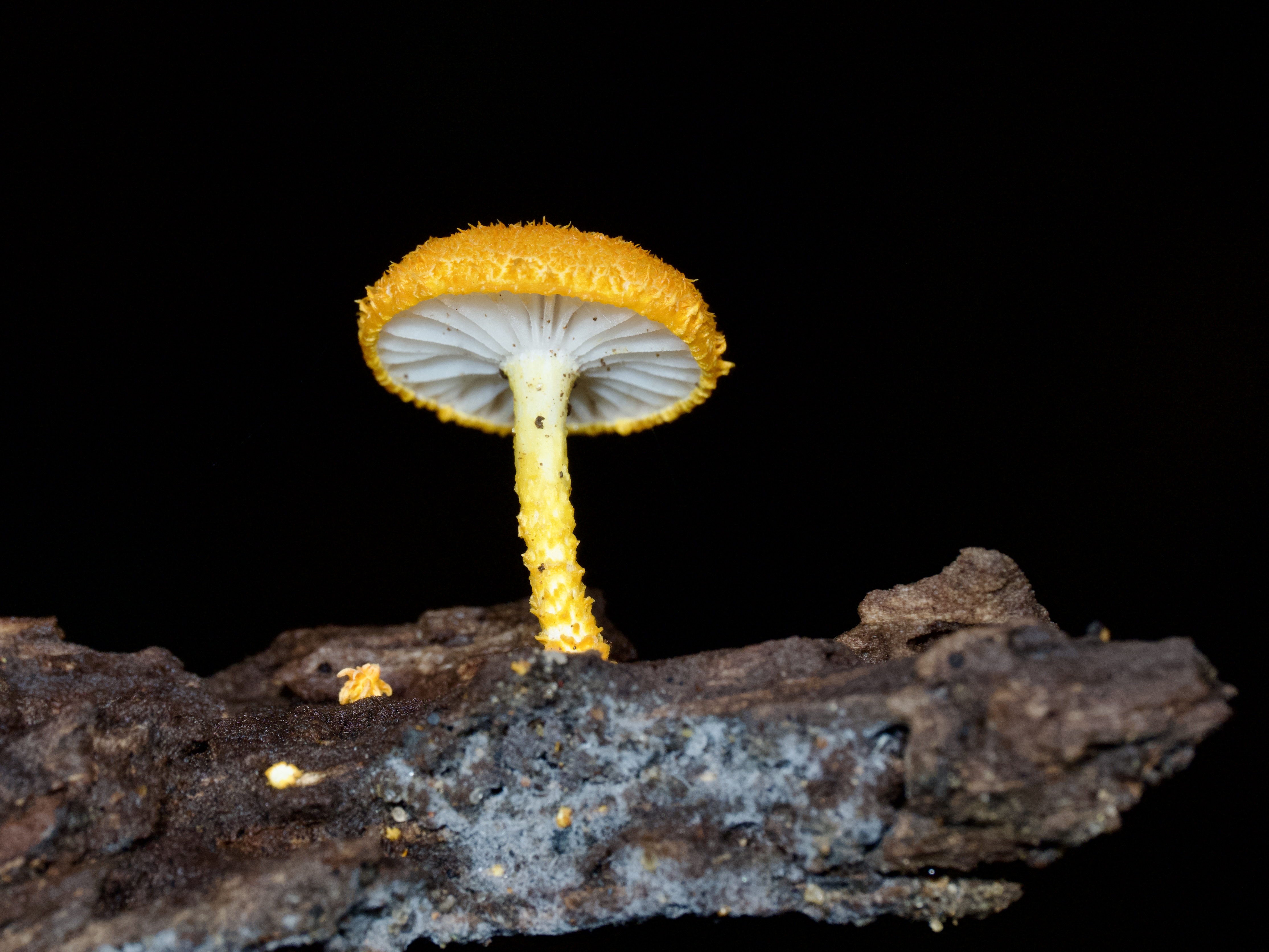
Fungi are popping up everywhere right now. I’ve had a couple of rounded earthstars (Geastrum saccatum) burst up from under the clothesline. Side note: I often use common names, despite the confusion they can sometimes cause. I’m all about keeping nature, and the observation of nature, accessible. More on that later.
These fungi are almost alien-like in appearance and this is the first time I’ve spotted them. After the second one popped up, I couldn’t wait any longer. It was time to hunt! Now this isn’t about searching for mushrooms for food, but rather seeing how many different shapes and colours you can unearth, looking around the leaf litter and on and around decaying logs and branches. Some are seriously tiny and so it takes a bit of skill, a lot of patience and the more eyes the better. So bring your friends!
Along the Mt Keira Ring Track, among the moss-covered boulders and near a trickling creek, we found Violet-Toothed Polypore (Trichaptum biforme), occupying a huge, dead tree and overlapping each other. This was another fungus I’d never seen before and my husband and I promptly named it ‘Purple Rain’ – he’s a Prince fan and I’m a sucker for a name that calls it like it is.
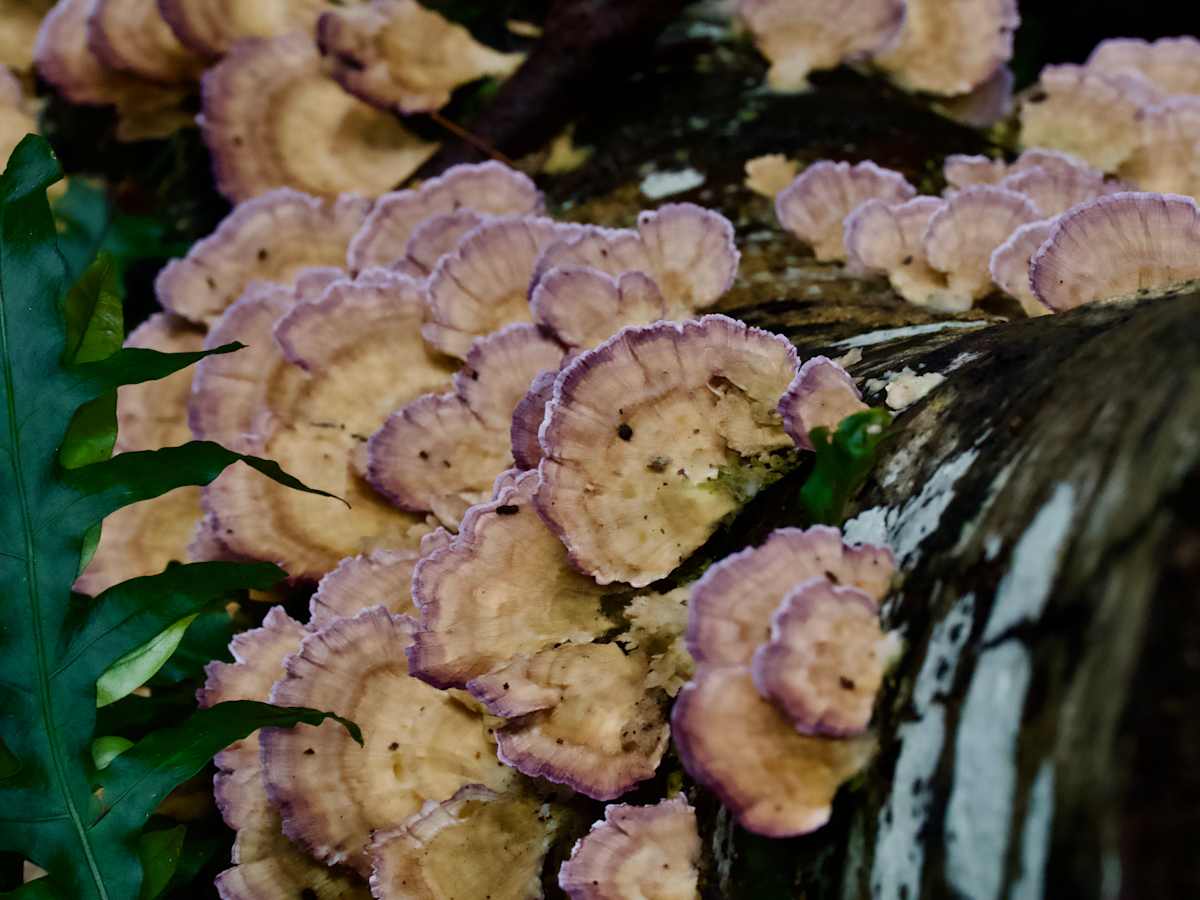
Ferreting around closer to home, we found, along with countless leeches, a couple of Golden-Scruffy Collybia (Cyptotrama asprata), which wasn’t far off the ‘Yellow Fluffy’ as we had christened them. These incredible mushies are only small – the first we found was maybe a centimetre tall and the second just a little spiky blob nestled in a nook on a fallen tree – and they seem to glow in the gloom of the forest.
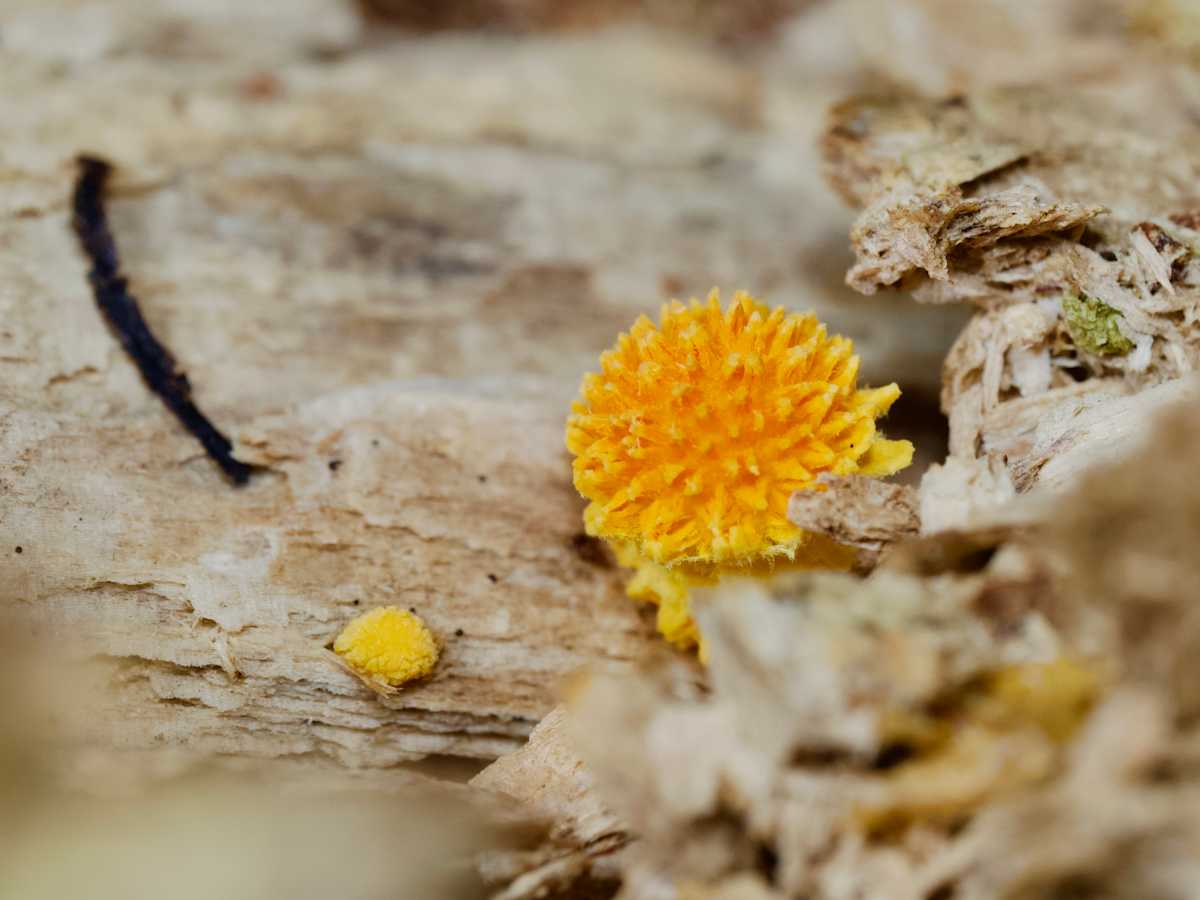
Further along we found several stacks of what we called ‘Pink Pancakes’, velvety looking fungus layered along various decaying branches. With the help of Australian and New Zealand Fungus Identification on Facebook we discovered it was known as Rhodofomitopsis lilacinogilva, Lilac Shelf Fungus.
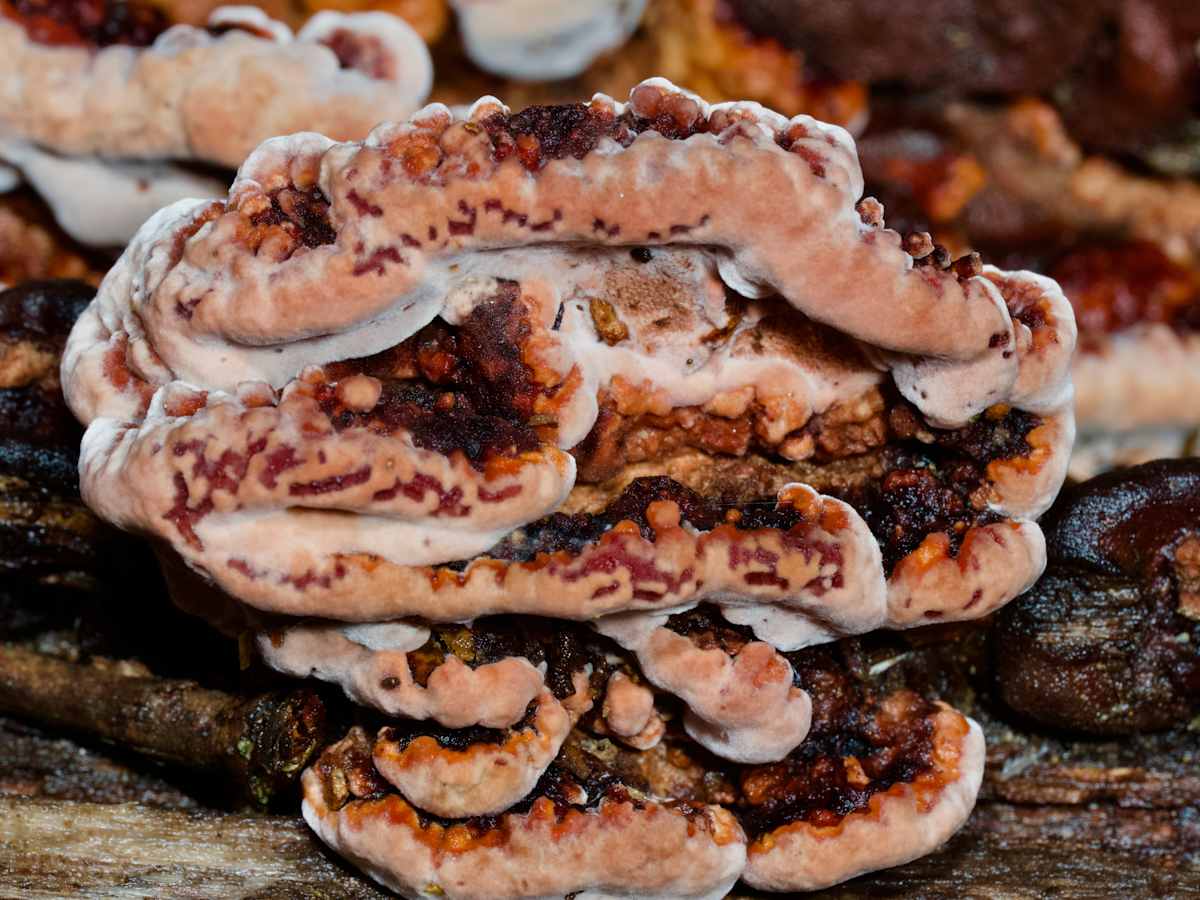
Joining that Facebook group gives you access to loads of experts and knowledgable amateurs happy to help identify your finds and there’s iNaturalist, where you can upload photos (phone pictures are fine) and get help identifying anything from fungi to flora and fauna. That’s if you want an identification and to learn the ins and outs of your discoveries. But you don’t need to.
Sure, science is fascinating, mycology particularly so, but if you prefer your time in nature to be more on the casual side, exploring for the fun of it, go for it. And if you’re just starting out, fungi hunting is a perfect stepping off point. But just remember: there are toxic fungi around. As in, fatally toxic, so this is all about looking and not eating.
Searching for fungi is very addictive with loads of shapes and sizes to uncover, some breathtakingly beautiful. Identification can be particularly tricky but as fungi don’t move they make for excellent photography subjects. They don’t care if you know their scientific name, common name or if you make up your own on the spot. And neither do I. Get out there and enjoy.



